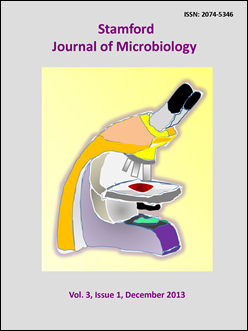Qualitative analysis of drinking water through the most probable number (MPN) method
DOI:
https://doi.org/10.3329/sjm.v3i1.22745Keywords:
Drinking water, Most probable number (MPN), Microorganisms, Coliform, Fecal contaminationAbstract
Water borne disease outbreaks associated with the drinking of unsafe water, containing pathogenic bacteria of fecal origin, is common in densely populated countries like Bangladesh. Present study was attempted to detect indicator bacteria from drinking water samples for the presumptive occurrence of fecal contaminations that are responsible for health associated problems. Therefore, a laboratory scale qualitative analysis through most probable number (MPN) method was employed. The indicator bacterium Escherichia coli were detected in 24 water samples out of 75 samples as revealed consequently by the presumptive, confirmed and completed tests of MPN method. Other Gram negative bacteria found in the samples included Alcaligenes faecalis, Pseudomonas spp., Klebsiella spp. and Proteus spp. Almost all of the identified bacteria showed resistance against commonly used antibiotics which is of significant health concern.
DOI: http://dx.doi.org/10.3329/sjm.v3i1.22745
Stamford Journal of Microbiology, Vol.3(1) 2013: 9-16
Downloads
1955
2211

